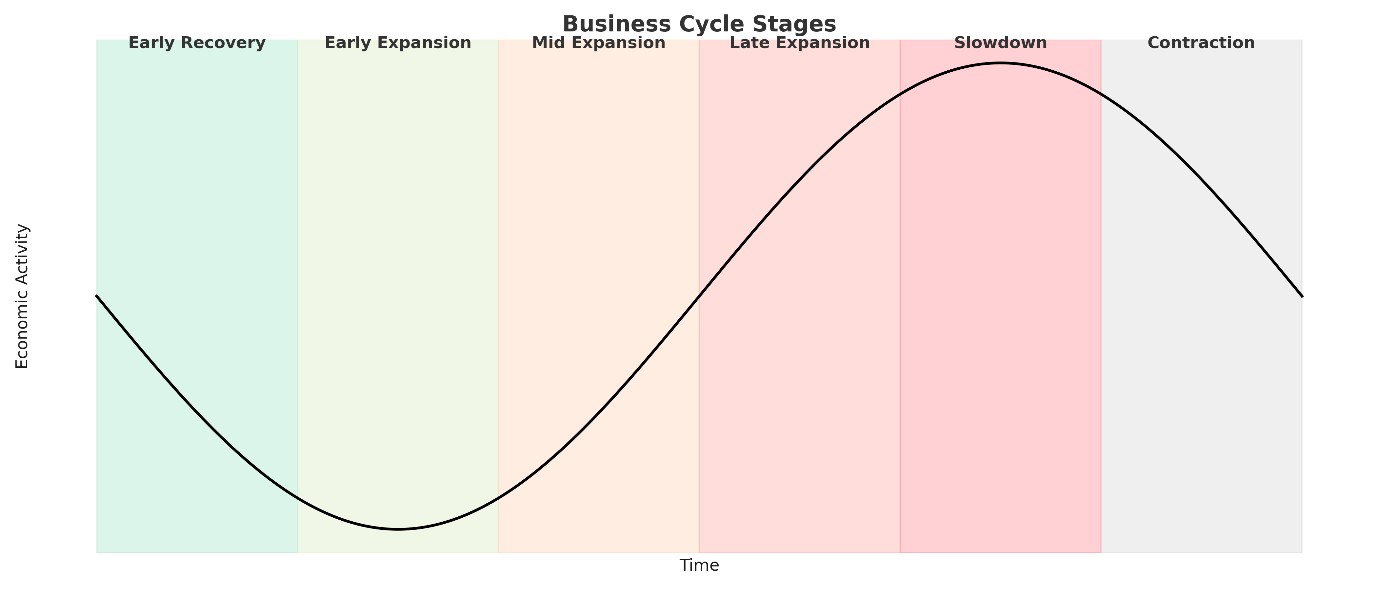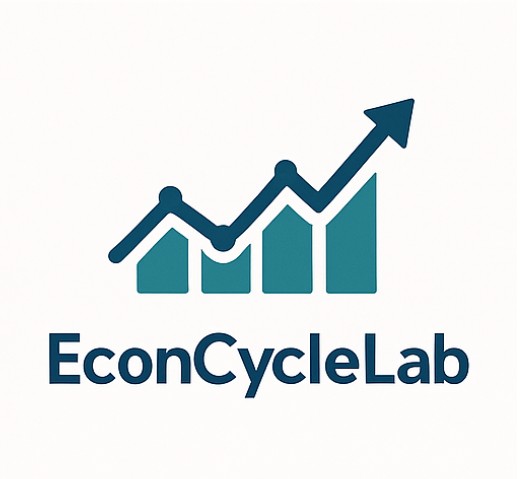Stage Guide

Learn about each stage of the U.S. business cycle and the key indicators that define them. Our AI-powered guide helps you understand economic trends and their implications.
The 6 Stages of the Economic Cycle
Economic activity moves in recurring patterns. Analysts often describe these movements in six broad stages, each with unique features.
Stage 1 – Early Recovery
- The economy starts to rebound after a slowdown.
- Inflation is low or declining.
- Interest rates are often supportive.
- Output and demand begin to grow, though cautiously.
Stage 2 – Early Expansion
- Growth picks up steadily.
- Employment begins to rise, and consumer spending improves.
- Business investment starts to recover.
- Inflation remains contained at low to moderate levels.
Stage 3 – Expansion
- Growth is solid and broad-based across sectors.
- Labor markets are strong with low unemployment.
- Services and manufacturing both contribute to activity.
- Inflation is moderate and manageable.
Stage 4 – Late Expansion
- Economic activity is at or near peak capacity.
- Inflation pressures increase.
- Central banks may raise interest rates.
- Asset prices are strong but volatility can rise.
Stage 5 – Slowdown
- Growth begins to lose momentum.
- Business and consumer confidence weaken.
- Employment growth slows.
- Inflation may remain high for a time, even as output cools.
Stage 6 – Contraction
- Output declines across key sectors.
- Unemployment rises.
- Demand weakens significantly.
- Inflation falls or turns into deflation.
- Policy measures are often introduced to stabilize activity.
Note: This guide is for research and educational purposes only. It describes common stages of the economic cycle and does not constitute financial advice.
